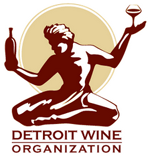Bordeaux vs. Cabernet Sauvignon – what’s the difference? Chablis vs. Chardonnay? Sancerre vs. Sauvignon Blanc? In most cases, the difference is the naming convention. Some wines are named for their grape variety. Others are named for the place where the grapes grew. A varietal wine is a wine named after either the principal or the sole grape variety that makes up the wine – such as Chardonnay. Most European wines are named after the region where they are made. They are often made from the same grape as American wines (Chardonnay, Sauvignon Blanc, etc.), but they don’t say so on the label. Instead they say Chablis or Sancerre or Burgundy. In Europe, place names automatically connote grape varieties because they’ve been growing grapes so long that they have systematized most of their grape/location match ups based on where the grapes grow best. So, Bordeaux is a location, but it connotes Cabernet Sauvignon, Merlot and Cabernet Franc. Burgundy connotes Pinot Noir. More on the intricacies of naming wines later…
Tidbits to Amaze and Delight Your Friends Fermenting and/or aging wine in oak barrels adds flavors and complexity to a wine. So wine that is referred to as “oaky” may imply a wine with more depth than a less “oaky” wine. That doesn’t mean it’s better – just different. In fact, some winemakers are now questioning the value of fermenting and aging in oak, especially for white wines. There’s also a difference between barrels. The origin of the oak, size of the barrel, age of the barrel and amount of “toast” of the barrel all impact the taste of the wine. The taste of the wine also depends on whether it was barrel-fermented or barrel-aged in oak… but more on that next time.
Jevon is a board member


Leave A Comment